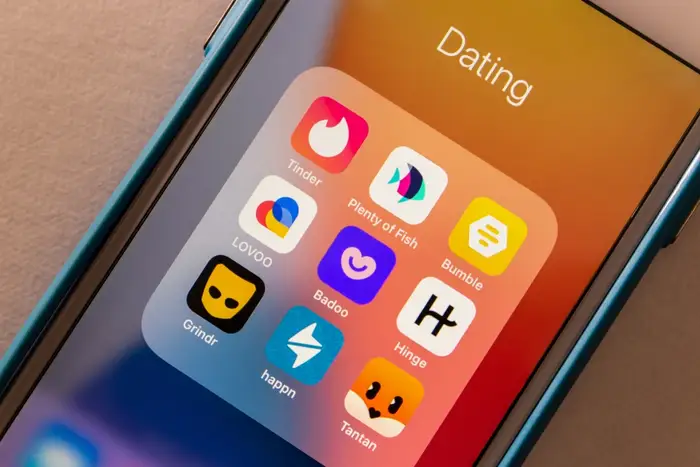The online dating landscape has evolved dramatically over the past decade, and with 2025 approaching, new trends are set to reshape how individuals interact, connect, and form relationships. As dating app development solutions advance, the industry is poised to innovate with cutting-edge features that cater to users’ increasingly specific needs. If you’re looking to build a dating app, it’s essential to stay ahead of these trends to ensure success in a competitive market.
1. AI-Powered Matching and Relationship Guidance
Artificial intelligence (AI) has already begun playing a pivotal role in the world of online dating. In 2025, expect AI to become even more integral by providing personalized matchmaking and relationship advice based on user behavior, preferences, and past interactions.
Dating apps will leverage machine learning algorithms to suggest potential matches not only based on common interests but also on emotional compatibility, communication styles, and even shared life goals. Additionally, AI-driven features like “relationship coaches” will provide tips on improving interactions, offering users more than just a platform to meet people, but a tool to foster lasting relationships.
2. Niche Dating Apps for Specialized Communities
While general dating apps like Tinder and Bumble have a massive user base, niche dating apps are increasingly gaining traction. In 2025, we’ll likely see an expansion of apps tailored to specific communities or interests. Whether it’s for certain professions, hobbies, or life stages (e.g., single parents or plant enthusiasts), niche platforms offer a unique opportunity for people to connect over common ground.
Building a dating app for a niche market involves understanding the target audience deeply, offering specialized features, and fostering a supportive environment where users can build meaningful connections. Niche dating apps can also cater to specific cultural, religious, or geographical groups, allowing for a more personalized and inclusive experience.
3. Augmented Reality (AR) and Virtual Dating Experiences
As virtual reality (VR) and augmented reality (AR) technologies continue to develop, dating apps will increasingly integrate these tools to enhance virtual dating experiences. By 2025, AR could allow users to create virtual avatars and interact with their matches in virtual settings, making online dating feel more interactive and less disconnected.
For example, AR could allow users to go on virtual dates in a simulated environment—such as a coffee shop or a scenic beach—without leaving their homes. This could be especially valuable in long-distance relationships or for users looking to vet their potential matches before meeting in person.
4. Safety and Privacy Features
With an increase in the number of online daters, privacy and safety have become major concerns. By 2025, dating apps will integrate enhanced security features to protect users’ personal information and ensure they feel comfortable while interacting with strangers.
Key features could include:
- Two-factor authentication for login security
- Photo verification to reduce fake profiles and bots
- Privacy controls allowing users to choose what personal data they share and with whom
- AI-driven moderation tools to detect and prevent harassment or inappropriate behavior in real-time
Focusing on safety and privacy will be crucial in gaining users’ trust and ensuring the app’s long-term success.
5. Incorporation of Video Profiles and Live Streaming
Video content continues to rise in popularity across social media platforms, and dating apps are catching on to this trend. In 2025, we expect more dating apps to allow users to create video profiles or post short introductory videos. This gives users an opportunity to showcase their personalities, communication skills, and physical appearance in a more authentic way than static images alone can provide.
Live streaming features may also become more widespread, allowing users to go live and interact with potential matches in real-time, building a more organic and engaging experience. These features can bridge the gap between texting and in-person meetings, allowing people to get to know each other in a more dynamic way.
6. Social Integration and Gamification
Integrating dating apps with social media platforms like Instagram and TikTok could become a standard feature by 2025. This integration would allow users to share content, follow their matches’ activities, and potentially engage with them in a more informal, everyday setting. Gamification—such as earning points, badges, or rewards for interacting with others—may also become a part of dating apps, providing an incentive for users to be more active and engaged on the platform.
By introducing elements of playfulness, dating apps can make the experience feel more enjoyable, while also encouraging users to invest more time and effort into forming connections.
7. Sustainable and Ethical Dating
As sustainability and social responsibility continue to be major concerns for younger generations, dating apps are expected to embrace ethical dating practices. By 2025, we might see apps that encourage users to consider environmental impact, support local businesses, or get involved in community-based causes.
For example, users may have the option to showcase their commitment to sustainability, whether through eco-friendly habits or participation in social movements. Dating apps could also partner with non-profit organizations or host charity events, aligning their platforms with values that resonate with socially conscious users.
8. Hybrid Dating Models (Online and Offline Integration)
Despite the rise of online dating, many users still crave genuine, in-person connections. In response, hybrid dating models that seamlessly integrate online and offline experiences will likely become more common. By 2025, dating apps might offer real-world events or group meetups as a part of their platform, allowing users to attend singles’ events, concerts, or speed dating sessions organized by the app.
These hybrid experiences could provide users with a more holistic dating journey, blending the ease of online connections with the authenticity of real-world interactions.
Conclusion
As the online dating industry continues to evolve, 2025 promises to bring exciting advancements in technology, personalization, and user experience. Whether you’re interested in AI-driven matchmaking, virtual dating experiences, or building a niche platform, staying on top of these trends will be key to developing innovative dating app solutions.
By focusing on user-centric features, privacy, and engagement, those who are looking to build a dating app will be well-positioned to thrive in the competitive market of 2025. The future of online dating is bright, and the possibilities for creating meaningful, lasting connections are boundless.


